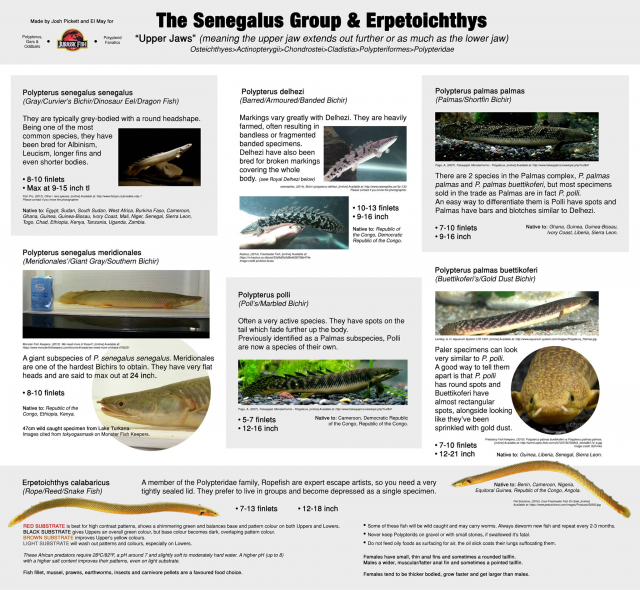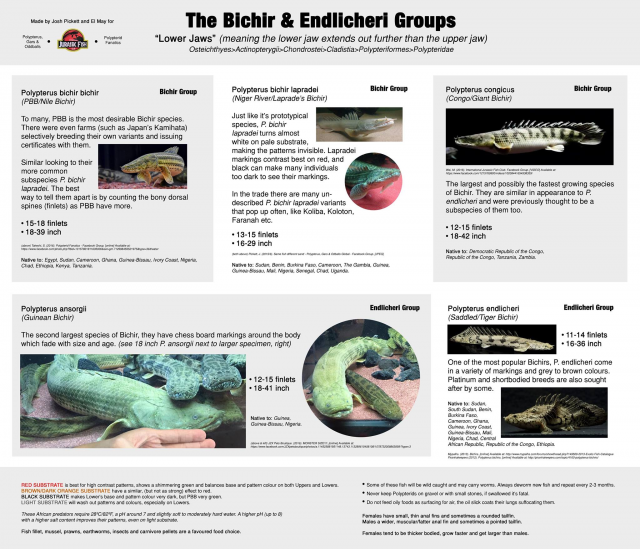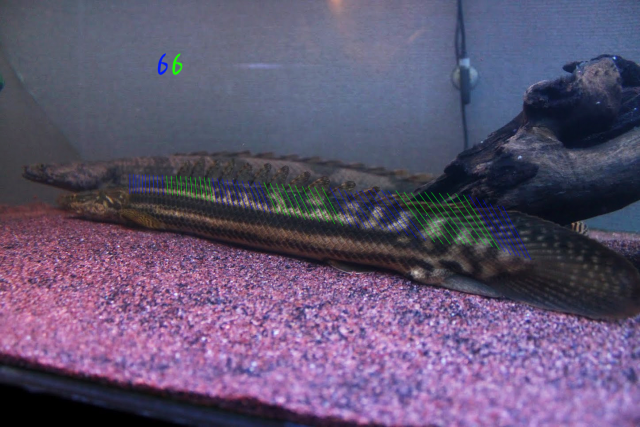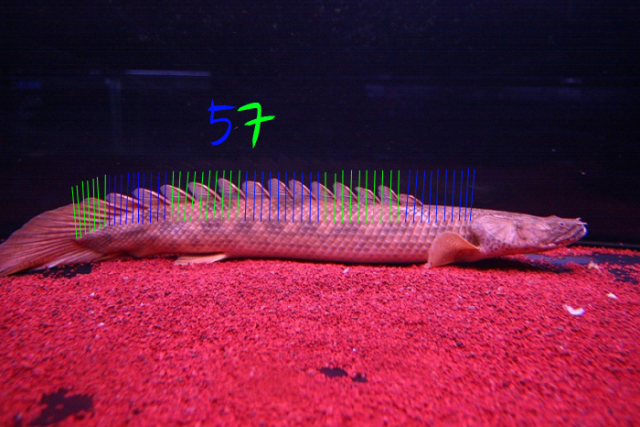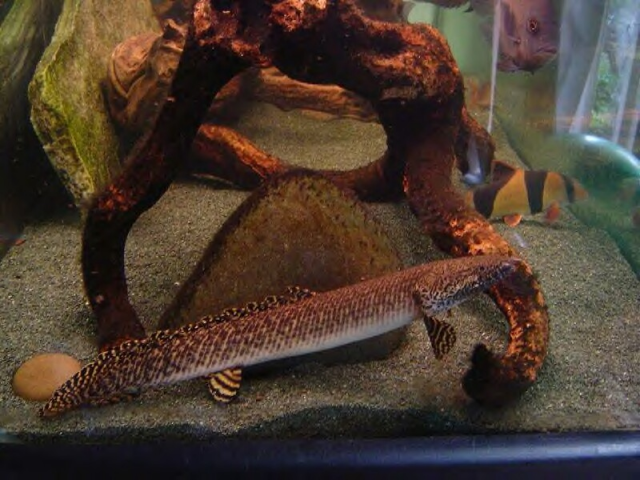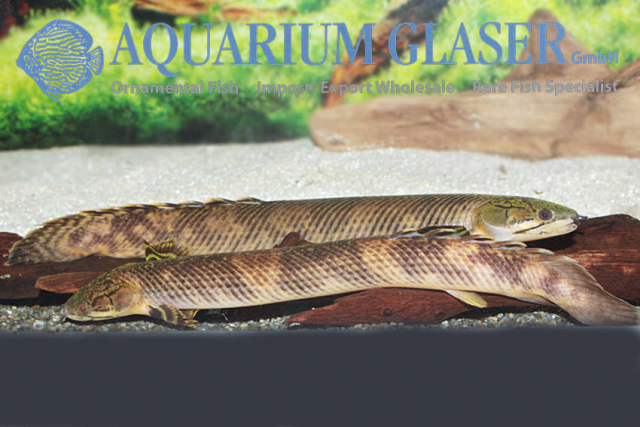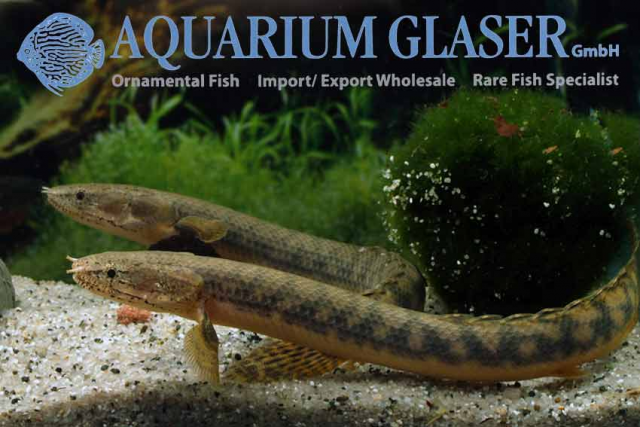Introduction
Polypterus are a group of prehistoric, armoured fish living in the Northern regions of Africa and are popular aquarium residents due to their ancient morphology and relaxed demeanour. Unfortunately their taxonomy is in constant flux with several species being described recently and many more subspecies or variants recognised in the hobby.This thread is an amalgamation of important infomation from previous sticky threads to highlight currently recognised species and how to distinguish between them through a combination of visual cues and morphological traits. Hopefully this thread will aid with identifying your bichir or perhaps help you choose which one you want next
Index to posts
All Bichir (Polypterus) Species - Updated - link
endli and lap variants with pics - link
Lateral Line Scale Count - link
A visual reference to Polypterid species - link
Polypterus are a group of prehistoric, armoured fish living in the Northern regions of Africa and are popular aquarium residents due to their ancient morphology and relaxed demeanour. Unfortunately their taxonomy is in constant flux with several species being described recently and many more subspecies or variants recognised in the hobby.This thread is an amalgamation of important infomation from previous sticky threads to highlight currently recognised species and how to distinguish between them through a combination of visual cues and morphological traits. Hopefully this thread will aid with identifying your bichir or perhaps help you choose which one you want next
Index to posts
- Appendix 1: Infographics by Joshua picket - Post #2
- Appendix 2: Visual guide to endlicheri and lapradei morphs/variants by XRAYZ - Post #3
- Appendix 3: Lateral line scale counts by tokyogasmask - Post #4
- Appendix 4: Visual guide to upper jaw species by BeBlondie - Post #5
- Polypterus ornatipinnis - Post #6
- Polypterus delhezi - Post #7
- Polypterus weeksii - Post #8
- Polypterus mokelembembe - Post #9
- Polypterus retropinnis - Post #10
- Polypterus teugelsi - Post #11
- Polypterus senegalus senegalus - Post #12
- Polypterus senegalus meridionalis - Post #13
- Polypterus palmas buettikoferi - Post #14
- Polypterus palmas palmas - Post #15
- Polypterus polli - Post #16
All Bichir (Polypterus) Species - Updated - link
endli and lap variants with pics - link
Lateral Line Scale Count - link
A visual reference to Polypterid species - link
Last edited:



